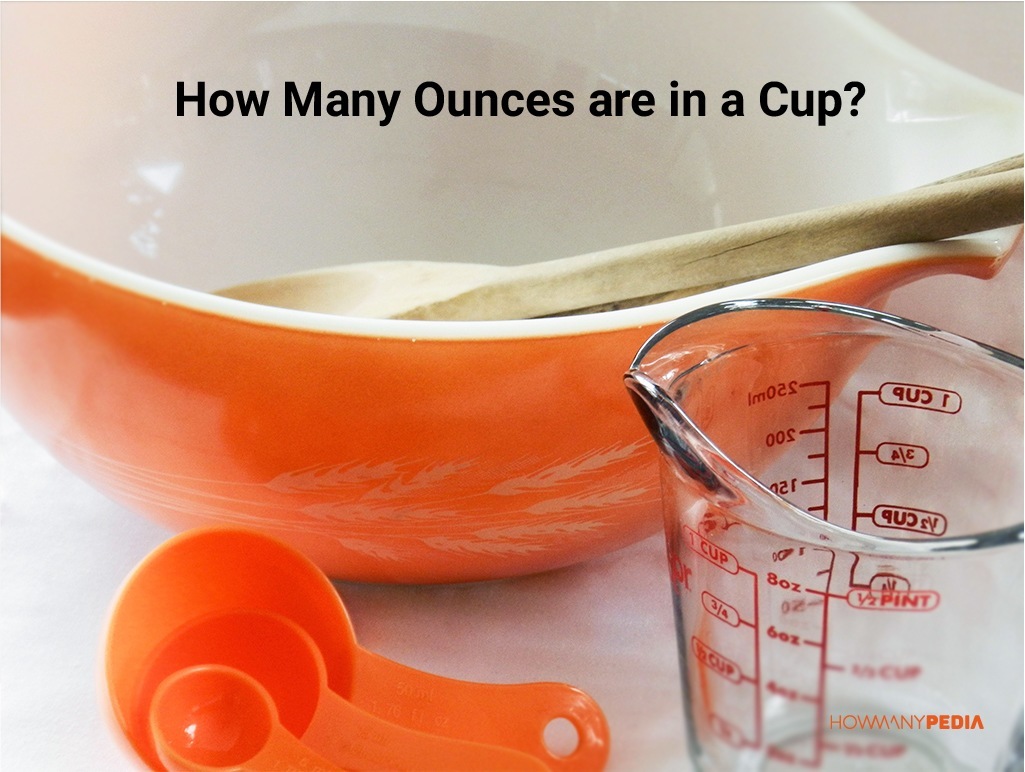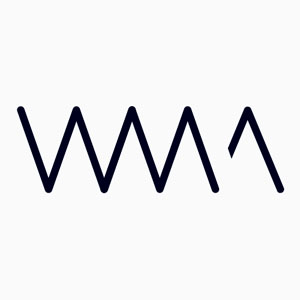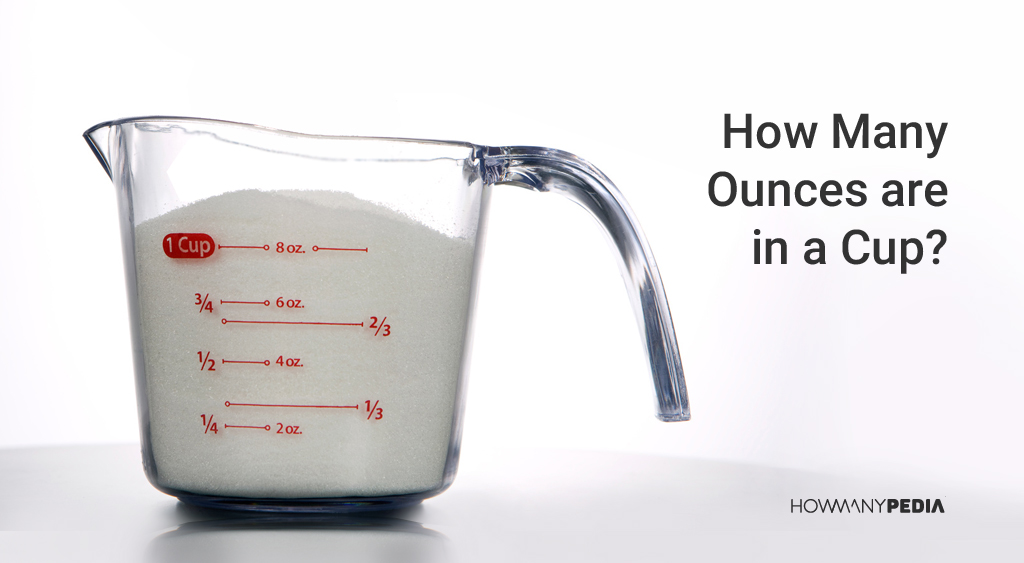How Many Ounces are in a Cup
How many ounces are in a cup? A cup may be a different amount of something depending on where you live. If you live in America, one cup is equivalent to 8 fluid ounces. If you live in any other country, the amount equivalent to a cup may be a completely different unit of measurement, such as milliliters.
How Many Ounces are in a Cup

Although many of us were taught that there are 8 ounces in a cup, this is not a universal truth throughout the world. A metric cup is equal to 250 milliliters and nearly 9 ounces, which is the measurement of a cup based on the Metric system. There are other measurements for the cup, but these two are the most popular.
If you’re wondering how you get an exact cup, especially if you’re trying to bake or manage your fluid intake, it isn’t that hard to understand; there are many devices you can get to help you measure the correct amount.
For instance, the average coffee cup was developed to be right around 8 ounces, so you may use that for a measuring cup in a pinch. Also, you can use any type of measuring jug to determine the volume of a cup.
Fluid Ounces (fl oz) Versus Ounces (oz)
You may be curious what the difference is between a fluid ounce and an ounce because they seem like they may be the same thing, but they’re not.
A fluid ounce is a measurement of volume and an ounce is a measurement of weight. For instance, if you pour yourself a cup of coffee, you’ll need to pour in an amount of coffee that will fit in your mug. Otherwise, it would spill over, not to mention equal far more coffee than a standard cup.
However, if you were trying to get an ounce of sugar to go into your coffee, you would actually need to measure it using a scale for it to be precise.
You could put it into a measuring cup and measure it, but that’s not always going to produce the same results, where you may get more sugar one time than you do another time because of the way the sugar crystals land in the measuring receptacle.
Cups to Ounces Conversion (c to oz)
| CUPS (fluid, US) | OUNCES (fluid, US) | CUPS (fluid, US) | OUNCES (fluid, US) |
|---|---|---|---|
| 1 | 8.00 | 20 | 160.00 |
| 2 | 16.00 | 30 | 240.00 |
| 3 | 24.00 | 40 | 320.00 |
| 4 | 32.00 | 50 | 400.00 |
| 5 | 40.00 | 60 | 480.00 |
| 6 | 48.00 | 70 | 560.00 |
| 7 | 56.00 | 80 | 640.00 |
| 8 | 64.00 | 90 | 720.00 |
| 9 | 72.00 | 100 | 800.00 |
| 10 | 80.00 | 1000 | 8000.00 |
Ounces to Cups Conversion (oz to c)
| OUNCES (fluid, US) | CUPS (fluid, US) | OUNCES (fluid, US) | CUPS (fluid, US) |
|---|---|---|---|
| 1 | 0.125 | 20 | 2.500 |
| 2 | 0.250 | 30 | 3.750 |
| 3 | 0.375 | 40 | 5.000 |
| 4 | 0.500 | 50 | 6.2500 |
| 5 | 0.625 | 60 | 7.500 |
| 6 | 0.750 | 70 | 8.750 |
| 7 | 0.875 | 80 | 10.000 |
| 8 | 1.000 | 90 | 11.250 |
| 9 | 1.125 | 100 | 12.500 |
| 10 | 1.250 | 1000 | 125.00 |
What are Cups For?
By now, you will have noticed that the number of ounces in a cup is not really an easy question to answer, and it’s a bit confusing as well, especially if you’ve never heard these concepts before.
There may be some doubt in your mind about if it’s worth it or not, but the concept of a cup is definitely worth it and helps to make many of the things we love to eat and drink the most.
In the late 19th century, a woman by the name of Fannie Farmer published a cookbook for American cooks, especially ones that were taking care of a household.
In addition to it having hundreds of helpful recipes, she started something that had never been done at that time – she integrated a standard of measurement into her recipes that was not used yet, in the forms of a cup, teaspoons, and tablespoons.
She used things she already had in the kitchen to help out the average cook that had no time for mistakes. This helped enable the dry and wet ingredients in each of the recipes to get the same type of treatment.
These measurements are still used to this day. Before that time it may have been hard to duplicate the results when you were trying to make something – imagine if you were trying to bake a cake with measurements that didn’t involve cups or teaspoons, and you can begin to understand what cooking at the time must have been like.
Are Cups Precise?

The American measurement for a cup is not really precise, at least not compared with other measuring methods, although it’s good enough for many baking and cooking purposes.
There are, of course, better ways to measure things broken down into cups. In the United Kingdom and other places where the metric system rules, they will measure certain things in the form of grams if it’s a solid and milliliters or liters if it’s a liquid.
Much like a fluid ounce and ounce, a gram must be measured on a scale, whereas a milliliter can be measured through a beaker or other container.
What Measurement Should I Use?

Now that you know what the strengths and weaknesses are for the regular cup, you may be concerned as to how you should be measuring your liquids and solids. This, of course, depends on what you’re measuring for.
If you’re trying to drink enough water to stay hydrated, you can use an informal measure of the cup, or a coffee cup, as it doesn’t have to be all that precise.
On the flip side, if you’re making a delicate pastry or cake, you will probably want to pull out a kitchen scale and measure the dry ingredients with it so you can get the most exact measurements.
There can be a difference between a cup of something and 8 ounces of it, which is enough to cause chaos in a recipe. As an example, if you measure out syrup into a measuring cup up to the cup line, it may be more fluid ounces than if you simply weighed out 8 ounces.
A scale will always be more precise whenever you are dealing with measurements that depend on weight and not volume.
Final Thoughts: How Many Ounces in a Cup

The fact is that there are 8 ounces in a cup, or approximately 240 milliliters. However, that is not universal, nor do all people agree with it.
For this reason, it’s best to use this measurement for American recipes for best results. Feel free to pull out your measuring cup for all of your ingredients, liquid or solid.
If you have adapted a recipe from somewhere else, it will be better to use whatever measurement system they suggest.



